About a year ago, an old university colleague proposed a golf trip to Italy, which I immediately signed up to. It was the perfect reunion excuse for a group of Oxford golfing oldies to get together and enjoy time together. Friends who I had not seen for almost 50 years came in from the USA and India to meet in Perugia for 3 days of golf at a nearby course.
Interestingly, Mussolini considered golf to be a decadent British sport so when he came to power the game was banned in Italy. It has never really rebounded from that and remains a minor sport.
Perhaps the difficulty of finding comfortable undulating land to build courses has not helped nor the high summer temperatures that made our playing quite a challenge. But enough of that, the trip gave me an opportunity to explore some more churches and investigate the organs that I hope I would find within.
Exploring Perugia Cathedral
Perugia is a magnificent city perched on a prominent hill. In fact, built now on top of major buildings created centuries ago. The climb up the hill is assisted by escalators and funicular lifts – an unusual but welcome experience.
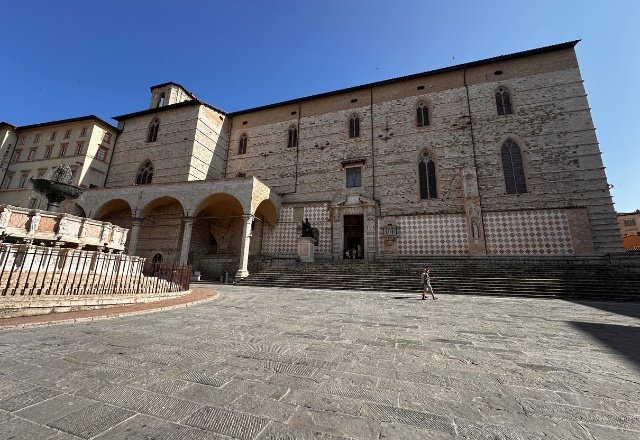
Perugia Cathedral stands in the centre of the hill. From outside, it’s not immediately obvious that it’s a church. The bell tower as is common in Italy is about 100 meters away disguising the buildings’ function.
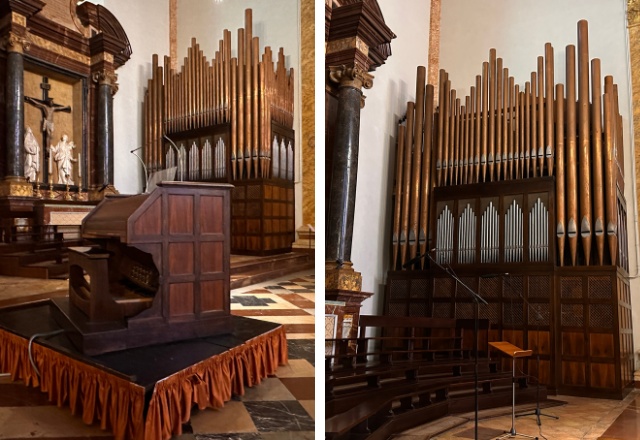
Once inside, the building offers the typical richly decorated interior with a rather splendid pipe face behind the altar as well as a pipe case set on the south side near the organ console. Interesting also to see such a centrally sited console. No opportunity here for the organist to read a newspaper or emails between hymns as I sometime do!
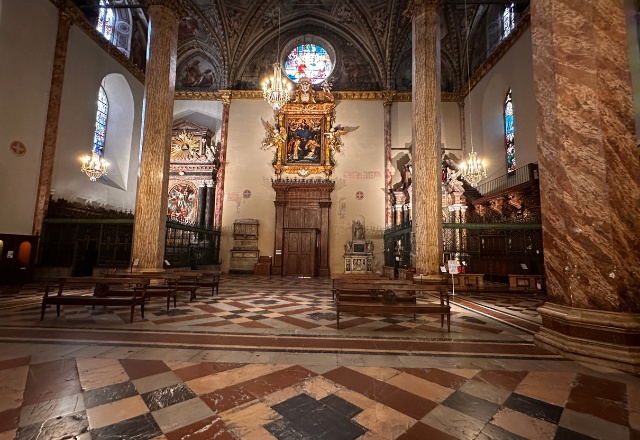
A scenic stop in Volterra
Returning to Tuscany for my flight home, I took the opportunity to spend a night in Volterra. Another hilltop town famous for its alabaster craftsmen that assemble complex and beautiful items from this light, colourful and near transparent stone.
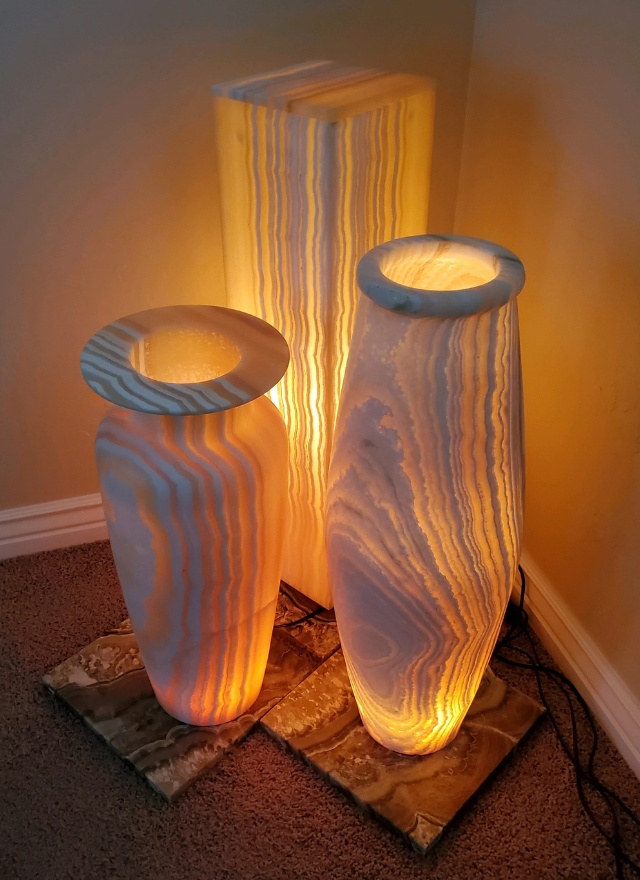
Volterra Cathedral is on a much smaller scale than Perugia. Inside the building is reminiscent of Siena Cathedral with the black and white layered stone effect that makes the appearance very detailed and beautiful.
Again, the organ pipework sits behind the altar. A Latin plaque on the case translates Venerable Bishop Danti Maria, having completed the tenth year of his Episcopate, rejoiced and congratulated the people, who had gathered together to celebrate the Fourth Day of February 1936. I wonder if this is the date the organ was built. The façade style is certainly not that of a much more ancient instrument.
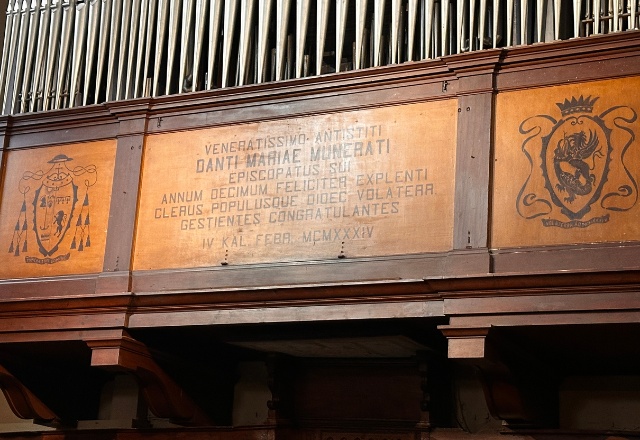
Nearby, I visited a smaller church in Volterra with a much smaller instrument on a west gallery above the door. As I have described in an earlier blog, although these instruments are small the position allows just a few ranks of pipes to fill a space beautifully, as I expect is the case here.
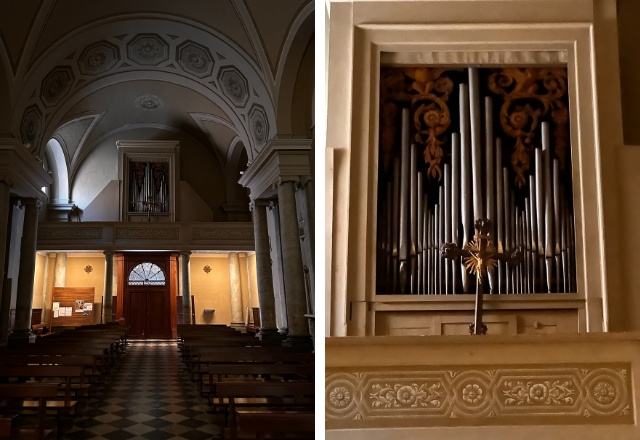
Sadly, no instruments were being played on these visits so I was deprived of the opportunity to add more pipe organ sound to my Italian library.
I also visited a beautifully decorated chapel, now a museum, that shows off the magnificent rococo style decoration found right across Italy.
Discoveries in Riparbella
On my way back to Pisa the following day, I stopped for lunch in the small town of Riparbella, which is known for the painted decoration to many of the buildings and also some of the roads.
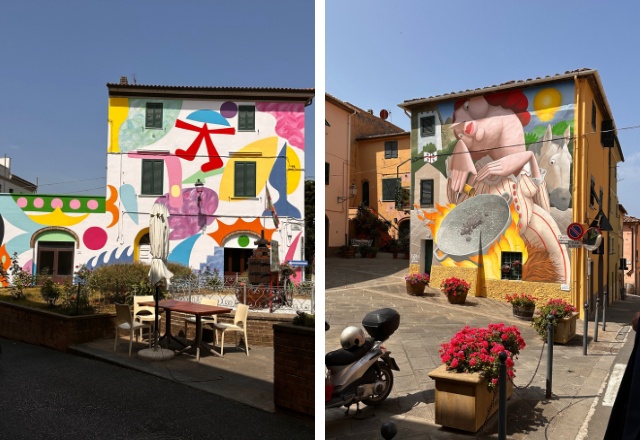
Riparbella church has a rather utilitarian pipe façade on a west end gallery but in keeping with a much less decorated interior.
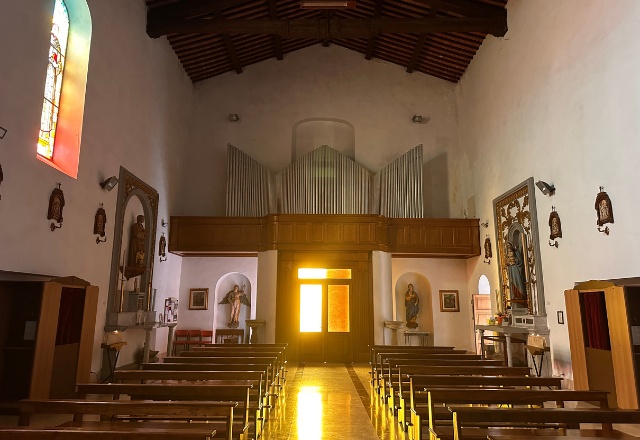
Looking around I saw the organ console in the nave and this perhaps explained the set up. It was a Viscount Jubileum 232. A massively popular instrument in the 1990’s.
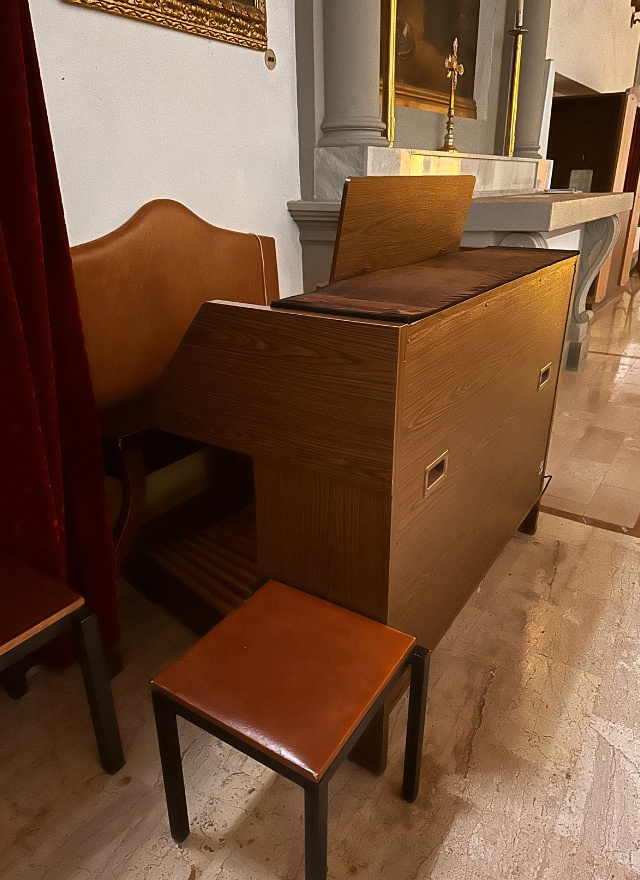
Ever curious, I cheekily turned the power switch on to allow myself a short play before flying home. Sadly, the power was off!
One Final Organ… Almost
So, my plans to play an organ on this trip were thwarted. Still, I’ll just have to wait for my next visit and hope to finally enjoy the wonderful instrument in the Corsanico church near my Tuscany home.
Though golf was the original reason for the journey, it was the unexpected organ discoveries and historic churches that made this Italian trip so memorable. There’s always something special about hearing – or even just seeing – how music and architecture intertwine across centuries. I look forward to returning soon, hopefully with power on and more opportunities to play!
I have had a passion for church organs since the tender age of 12. I own and run Viscount Organs with a close attention to the detail that musicians appreciate; and a clear understanding of the benefits of digital technology and keeping to the traditional and emotional elements of organ playing.
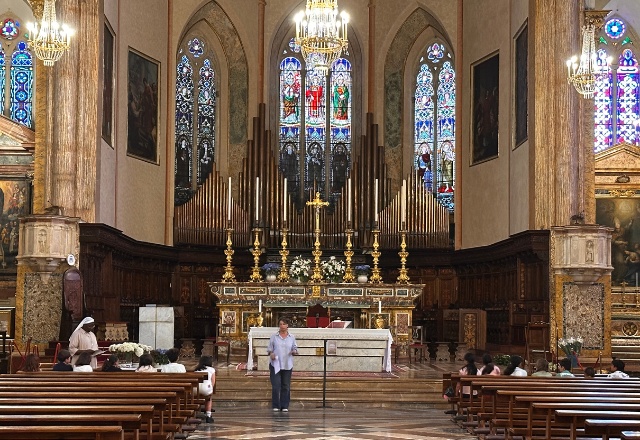



Leave a Reply